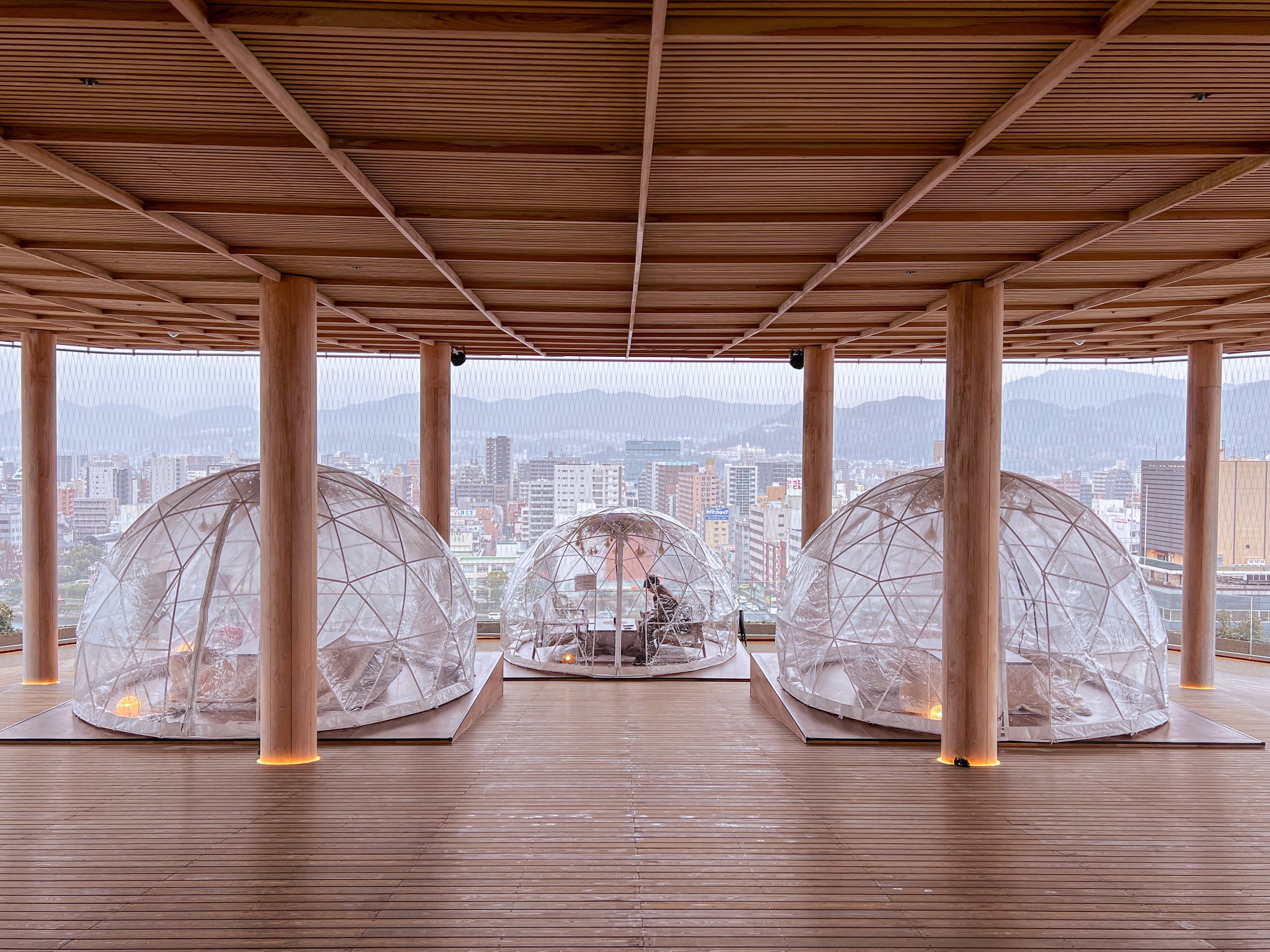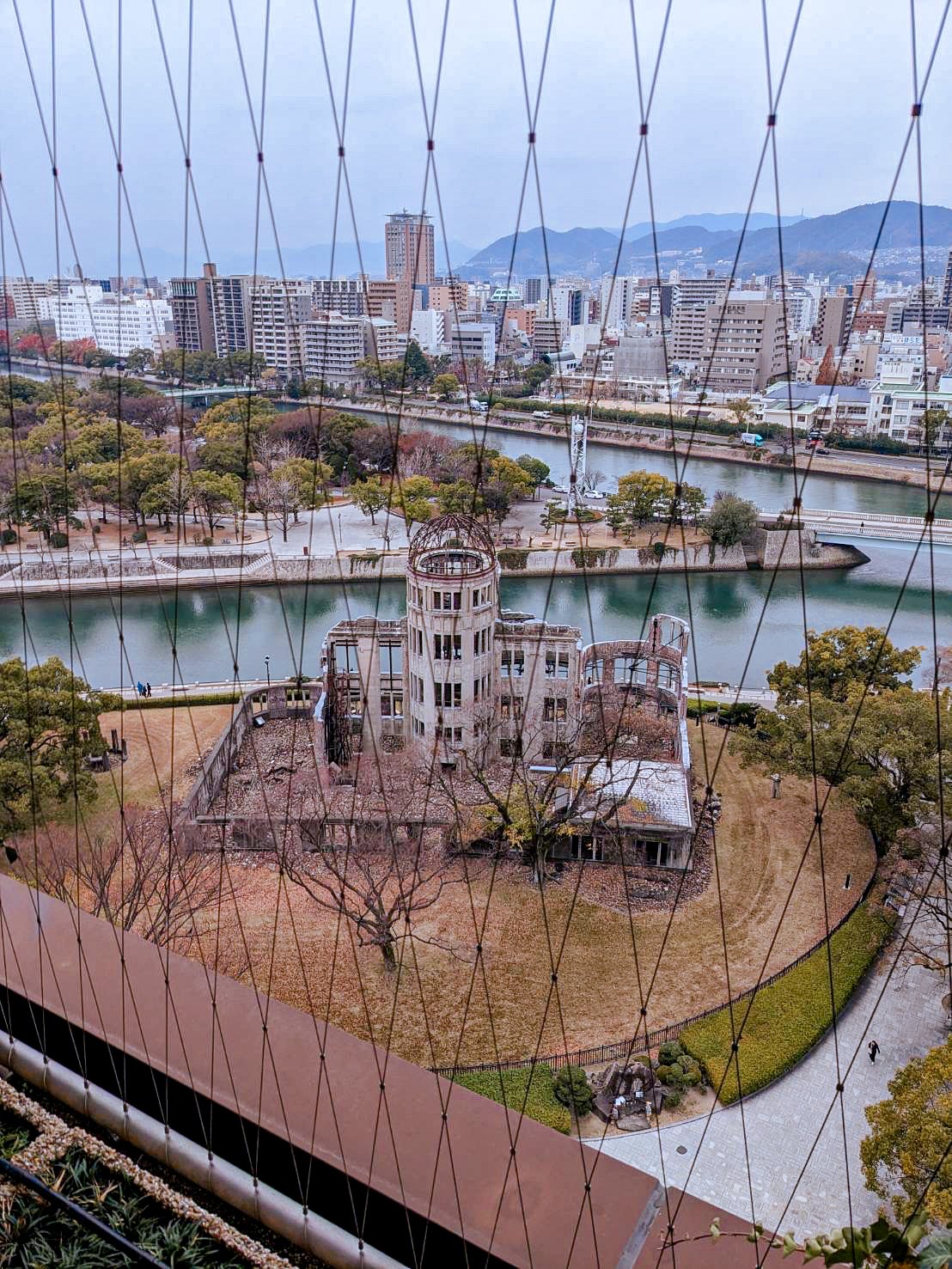Peace Memorial Park
The Peace Memorial Park has numerous monuments dedicated to those who lost their lives on August 6th, 1945, when the US dropped an atomic bomb over Hiroshima. The main attraction of the park is the museum, which was a very eye-opening and heavy experience. I actually cried during my time here and really got to see and understand the gruesome horrors of what the victims went through. This is all I have to say about the museum, as I find it distasteful to take photos in a place like that and upload them to the internet with detailed explanations. The Peace Memorial Museum should be a personal experience for those who are interested.
With that said, this post will only be about some of the beautiful monuments in the park. The main point of the memorials is to spread the importance of world peace, as well as the message “No more Hiroshimas.” I saw this particular phrase in many different places around the park and in the museum, along with a few “No more Nagasakis.” It’s one of the things that really stuck with me even after going home. It’s such a simple phrase that’s packed with so much meaning and emotion.
Since the park is a decent size and there are countless things to see, it’s easy to spend all day here. As I will only be talking about a few monuments, I highly recommend to those who are reading to see everything for yourself if you have the chance. This is the best way to really appreciate the park and understand this horrific time in history.
Children’s Peace Monument
This monument stands in memory of all the innocent children who lost their lives to the bombing. It was originally inspired by a girl named Sadako Sasaki, who was only two years old at the time of the terrible event. Sadako survived the initial bombing and went on to live for another ten years. However, she ultimately developed leukemia which was likely caused by radiation exposure from the bomb.
During her time in the hospital, Sadako received origami cranes. These were given to sick people in hopes that they would make a quick recovery, and I believe this is still part of the culture even today. Sadako became inspired by the Japanese legend which states that the Japanese crane can live for 1,000 years and bring good luck, especially to those who can fold 1,000 paper cranes. Their wishes would also be granted by the gods if they were able to complete this task. Sadako folded these paper cranes day in and day out, hoping they would help her get better. Sadly, she passed away after an eight month battle with her illness.
In response to her death, Sadako’s classmates started organizing a way to commemorate not only their friend, but all of the children who lost their lives to the atomic bomb. They were able to get contributions from over 3,000 schools in Japan and donors from nine different countries. In 1958, the Children’s Peace Monument was unveiled. The statue stands in front of innumerable paper cranes, and below it is an inscription that says “This is our cry. This is our prayer. For building peace in this world.” Today, over 10 million cranes are donated every year from all over the world, and there’s even a place to leave your own paper crane near the monument.
As I got closer to the art pieces, I was surprised to see that everything was made from paper cranes. It was quite remarkable seeing just how many there were, especially because most of them were donated from people around the world. It’s amazing how Sadako’s story has touched the hearts of millions.
A-Bomb Dome
The Atomic Bomb Dome is another World Cultural Heritage Site in Hiroshima. It was originally called Hiroshima Prefectural Industrial Promotion Hall, where art shows would be held and products from around the prefecture would be sold. It was a large part of normal, every day life.
The bomb exploded 600 meters (1,968ft) above the city, and the hypocenter was just 160 meters (524ft) away from the dome. Due to the nature of the blast coming from above, some of the dome’s walls and framing stayed intact. After the war, there was some debate about preserving the dome. Some wanted it torn down because it was a painful reminder of what had happened, while others wanted to turn it into a monument.
After a long dispute, the decision was made to preserve the dome thanks to a 16 year old girl named Kajiyama Hiroko. She survived the initial blast as a baby, but died from cancer 15 years later. Her last diary entry stated, “The Industrial Promotion Hall will forever stand as a reminder to the world just how dreadful atomic bombs are.” These words resonated with the people of Hiroshima, and those who were fighting for its preservation went on to collect donations and signatures. Eventually, the City Council decided that the dome would be preserved, and it became a World Heritage Site in 1996. Now, people from all over the world come to see the dome in person.
It was a surreal moment seeing the A-Bomb Dome up close. The broken frame and fragmented brick walls really put into perspective how catastrophic atomic bombs are.
Park Center
The center of the Peace Park is probably the most recognizable, because the A-Bomb Dome is framed by the cenotaph for the victims of the bombing which sits on the Pond of Peace. The names of the known victims of the bombing are safely stored in front of the memorial, which acts as a roof to shelter the souls lost to the atomic bomb. An engraving rests under the structure which states, “Let all the souls here rest in peace, for we shall not repeat the evil.”
In front of the cenotaph is the Flame of Peace, which had an information plaque detailing what the flame means. It states, “The Flame of Peace symbolizes the universal desire for a world free from nuclear weapons. The flame will burn until the day when all such weapons shall have disappeared from the Earth.” The flame rests between an abstract depiction of two open hands facing upward.
Clock Tower of Peace
This clock tower has a very unique design and important symbolism. The twisted steel tower represents the people of Hiroshima uniting hands and praying for eternal peace, while the sphere in the center represents the people of the world. The clock is mainly known for its chime, which happens at 8:15AM every single day. This is the exact time when the bomb was dropped on Hiroshima.
I later found out a really awesome fact about the clock. This particular chime is on Japan’s Top 100 Soundscapes, which I had no idea was a thing!
Peace Bell
The Peace Bell is another well known structure in the Peace Park. It was forged by a metal castor named Masahiko Katori. This man was considered a “living national treasure,” because he played a huge role in repairing and protecting cultural properties after the war.
The bell has etchings of the world without borders, which symbolizes how we are all one. Visitors can use the log to strike the bell, and right where the log hits is the atomic energy symbol. This represents getting rid of nuclear weapons and the hope for a world without war.
The purpose of the mirror on the front is to reflect the soul of those who choose to ring the bell. The entire structure sits on a lotus pond, which has significance because lotus leaves were used to soothe victim’s wounds after the bombing.
I was impressed by all the symbolism around the park, but the characteristics of the Peace Bell really stood out to me. Every little detail has intricate meaning and illustrates the deep desire for a harmonious world.
Orizuru Tower
The Orizuru Tower ended up being one of the more light-hearted places in the park. It’s located right next to the A-Bomb Dome and offers amazing views, cafes, and a souvenir shop. There’s even an area where guests can learn how to make their own paper crane and donate it to the tower (or keep it as a souvenir), which is fitting since “Orizuru” means “paper crane” in English!
The tower opened in 2016 and I remember being impressed by the new and modern look. Art from talented locals decorated the walls throughout the tower, and the art changes from time to time. It was a refreshing change of pace after hours of learning about the tragic events that happened in Hiroshima during WWII.
Entrance to the observatory
Souvenir shop
One of the art pieces in the tower
I really loved the lights that lined the stairs
Orizuru Tower has a variety of activities, but it really prides itself on having a fantastic observatory. Located on the 13th floor, I was able to see views of the Peace Park and other parts of Hiroshima. On a clear day, Miyajima can be seen from the tower. Unfortunately, it was a rainy day when I visited but I got to experience something else that was very exciting.
During the winter season, the tower has a special event where guests can relax in a “snow globe.” These are domes that have a kotatsu (heated table) inside them, as well as blankets and cute decor. They’re very easy to rent at the nearby cafe, so Zach and I decided to take advantage of the opportunity. We got to choose which snow globe we wanted and how long we wanted to stay. The staff gave us a buzzer that went off when our time was up, and we had the option to extend our time if we paid extra money.
We wanted to order some momiji manju from the cafe to eat in the snow globe, but we visited pretty early in the morning before everything was completely open. This didn’t take away from the experience, though. The kotatsu was incredibly cozy and it was hard to leave the warmth. We actually considered extending our time but realized how much sightseeing we had left to do!
Snow globes
The inside of the one we chose
Perfect place for photos!
View of the A-Bomb Dome
Streets of Hiroshima
As I previously stated, the Peace Memorial Park has so much to offer. There are still so many more monuments that I didn’t list here and fascinating history that I spent hours reading about. The weather wasn’t great when I visited, but honestly I felt that it was fitting for the day’s activities. I learned a lot, saw a lot, and felt a lot. I really recommend the Peace Park for anyone visiting Japan, because seeing it in person is totally different than reading about it in a textbook. I’ll never forget the feeling I had while walking through the museum and realizing how horrific the bombing really was. Despite the melancholy mood throughout the day, it was uplifting to see countless messages spreading peace, love, and hope. This really stuck with me, and I left the park feeling optimistic about the future.
























